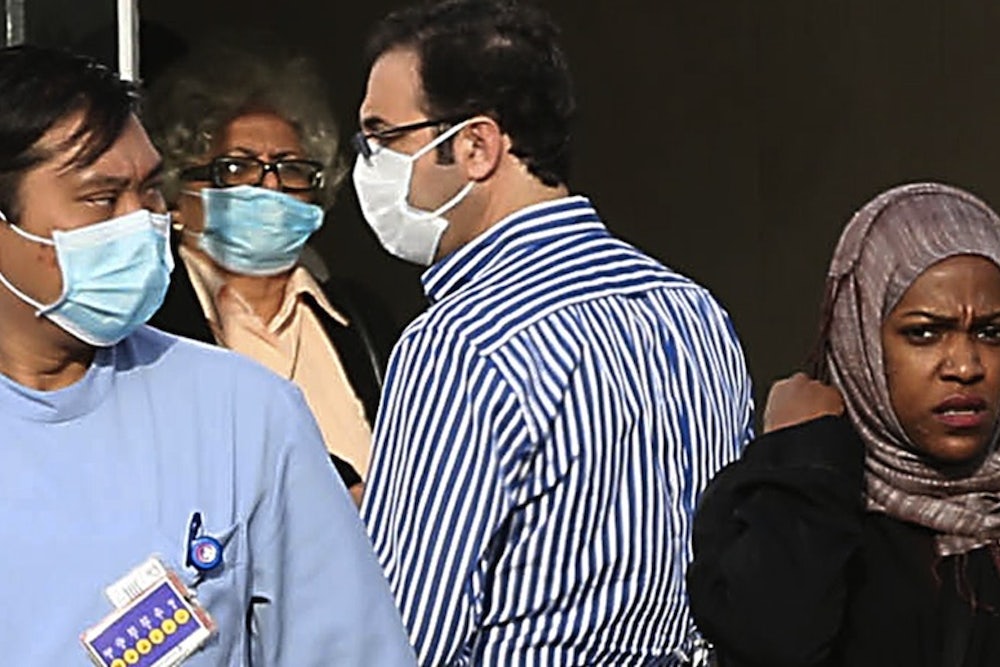The U.S. Centers for Disease Control and Prevention (CDC) on Friday announced the first American case of Middle East Respiratory Syndrome, or MERS. The patient, currently in isolation and receiving oxygen, is an Indiana health care professional who recently flew to Chicago from Riyadh, Saudi Arabia, with a stopover in London, on April 24. He then took a bus to his home in Indiana and became ill on April 27. He was hospitalized the next day.
It sounds scary. So far public health authorities know about some 400 cases, nearly all from the Middle East or travelers who have been there, and it's been fatal for about third of those. In Saudi Arabia, more than a hundred people have died from it in the past two years—more than 30 in the past month, according to media from the Persian Gulf. But while all new pathogens are cause for concern, this one is a long way from becoming an global health emergency.
Here’s what you need to know about it:
The virus may have come from bats—or camels. MERS is caused by a coronavirus, which is a common class of virus so-named for crown-like spikes on the pathogen’s surface. It is similar to the virus that caused SARS (Severe Acute Respiratory Syndrome). SARS killed hundreds of people, mostly in China, but travelled as far as Toronto, in 2002 and 2003. The MERS virus is thought to have originated in bats but is also widespread among camels. Several scientists have hypothesized that the virus may be spread in camel meat and milk.
It’s an upper respiratory disease—and acts like one. Although relatively few strains of the virus have the ability to jump from camels to human, those that do seem to multiply best in the deep lung tissue, hence its severity in terms of respiratory symptoms. A potential risk for spread, as seen in SARS, could be among hospital workers who take care of such patients and through respirators or other machines that aerosolize the fluids emerging from a coughing person infected with the virus.
The symptoms can vary in severity. The chief symptoms appear to be a high fever and shortness of breath consistent with severe pneumonia. But there have also been mild cases and some patients presenting with fever and coughing.
All threats are serious, but so far this one isn’t a big deal. Although infectious disease experts take this threat very seriously and are working assiduously to prevent and halt its spread, MERS is still a relatively small problem in the big scheme of global health. Four hundred cases of MERS have been reported since the first case was diagnosed in Saudi Arabia in 2012. In the past hour, more than 400 people died of other infectious diseases such as AIDS, TB, malaria and diarrhea.
It’s easy to lose perspective. The long history of epidemic diseases teaches us that the hue and cry inspired by suddenly occurring infectious diseases that kill relatively few people in spectacular fashion far outweighs the attention we pay to infectious diseases that kill many more people. For example, more than 1.2 million people die of AIDS per year. More than 1.3 million die of TB and 627,000 die from malaria each year.
Germs don’t discriminate, but people do. Microbes are among the most egalitarian of organisms; they travel widely, and rarely discriminate. Sadly, people do discriminate and our very human tendencies toward scapegoating or punishing the victims [and those who look like the victims] have not been completely eradicated, as has been seen with polio, malaria, and TB. We must always be vigilant about keeping such dangerous impulses in check.
Don’t bother stocking antibiotics, but cover your mouth when you cough. Antibiotics are useless against MERS, since it’s a virus. Anti-virals don’t seem to work either, so don't go hoarding tamiflu, either. But cover your coughs and sneezes—use a shirtsleeve, rather than your hands if you can—and wash your hands frequently. That’s not because you should be panicked about MERS. It’s because it’s good practice generally.
